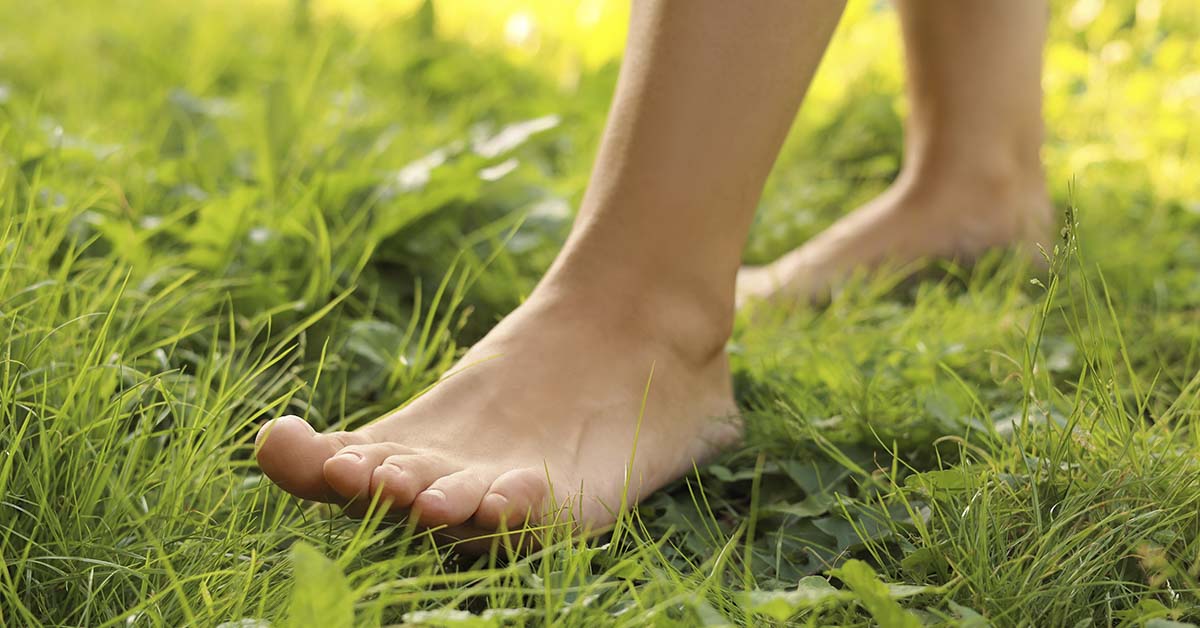Grounding, also known as earthing, connects your body directly to Earth’s natural electrical charge. This practice occurs through skin contact with the ground or specialized indoor equipment. This ancient practice is purported to transfer electrons from the Earth’s surface into your body to restore electrical balance. It’s claimed that grounding can reduce inflammation, improve sleep quality, ease stress, and enhance overall well-being.
The Earth maintains a negative electrical charge on its surface, containing abundant free electrons. When you make direct contact with the ground, your body absorbs these electrons naturally. This electron transfer helps neutralize positively charged free radicals that accumulate in your body.
Understanding the Science Behind Grounding

The human body functions as an intricate electrical system, with every cell containing electrical charges. The idea behing the need for grounding is that modern lifestyles disconnect us from the Earth’s natural energy through physical barriers like shoes and indoor environments. This disconnection allows positive static charges to build up in your body without any release.
Grounding is said to work by transferring electrons from the Earth into your body through direct skin contact. These electrons then act as natural antioxidants, neutralizing harmful free radicals that cause cellular damage and aging.
Blood flow increases while blood viscosity decreases, promoting better circulation throughout your body. The electrical connection between your body and Earth creates a state of electrical balance. Grounding also fixes what is has been coined as “electron deficiency syndrome.” While this syndrome has been claimed to be cause of many ailments, it is not a formal diagnosis.
Historical Foundations of Earthing Practices

Indigenous cultures globally have recognized the Earth’s healing properties for thousands of years. Ancient Chinese medicine describes Qi as vital energy that flows through all living things.
European interest in earthing emerged during the 19th century with pioneering health practitioners. Louis Kuhne published “The New Science of Healing” in 1891, promoting natural healing methods. Adolf Just followed with “Return to Nature” in 1896, specifically advocating barefoot walking.
American physician George Starr White investigated grounding’s effects on sleep quality in the early 1900s. His research involved patients sleeping while connected to copper wires attached to home plumbing systems. These early studies laid the groundwork for modern earthing research.
Inflammation Reduction and Pain Management
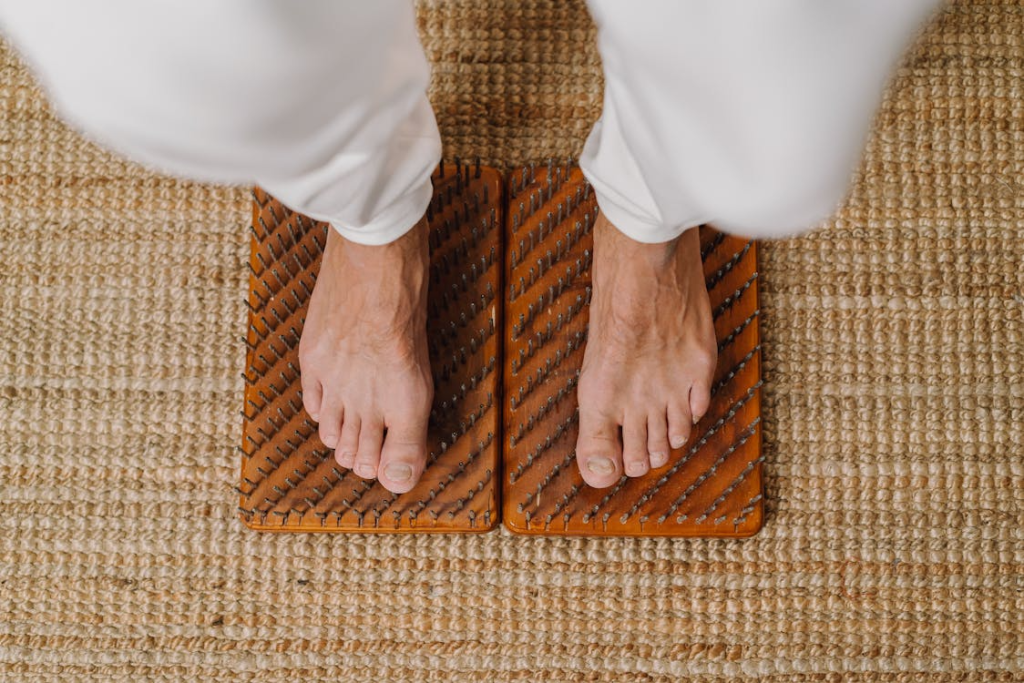
Studies demonstrate decreased levels of inflammatory indicators in blood samples from grounded individuals as opposed to those who were not grounded. This reduction helps alleviate pain associated with various inflammatory conditions.
The anti-inflammatory effects occur because electrons from the Earth neutralize positively charged free radicals. These free radicals contribute to tissue damage and chronic inflammation when left unchecked. Grounding provides a natural way to combat this oxidative stress.
Research shows grounding can reduce the cardinal signs of inflammation: redness, heat, swelling, and pain. Most participants experience rapid pain relief after beginning grounding sessions. This makes earthing particularly beneficial for people with arthritis or chronic pain conditions.
The pain-relieving effects extend beyond inflammation reduction. Grounding appears to influence nerve function and pain perception directly. Many users report decreased pain levels within 30 minutes of starting their grounding practice.
Sleep Quality and Circadian Rhythm Optimization

Grounding normalizes your body’s natural cortisol rhythm, improving sleep quality. Studies show grounded individuals experience better sleep patterns and reduced nighttime awakenings. The practice helps align your circadian rhythm with natural 24-hour cycles.
Cortisol levels naturally fluctuate throughout the day, peaking in the morning and declining at night. Chronic stress disrupts this pattern, leading to sleep disturbances and health problems. Grounding helps restore normal cortisol patterns.
The sleep benefits extend to people with specific sleep disorders. Research indicates grounding may help individuals with insomnia and sleep apnea. However, grounding should complement, not replace, conventional sleep disorder treatments.
Heart Health Enhancement

Grounding has been associated with potential benefits for heart function and blood circulation, though evidence is still limited. Some small studies have observed increases in heart rate variability (HRV) during grounding, a marker often linked to improved balance in the autonomic nervous system. Another pilot study found that blood viscosity may temporarily decrease during grounding, which could support better circulation. However, these findings come from small sample sizes and require larger, blinded trials for confirmation.
There is early research suggesting that grounding may enhance blood flow and oxygen delivery, possibly supporting recovery from injuries. For example, one study noted that grounded participants showed faster recovery from delayed onset muscle soreness compared to non-grounded controls. While these results are promising, the evidence base remains preliminary, and grounding should not be considered a substitute for conventional wound care or post-operative recovery protocols.
Grounding has also been explored for its potential to lower blood pressure, particularly in people with hypertension. A small clinical trial found that prolonged grounding was associated with modest reductions in blood pressure in a group of participants. While encouraging, this study had a limited sample size and lacked blinding, so further research is needed to establish a reliable connection. Individuals on blood pressure medication should consult a healthcare provider before incorporating grounding into their routine.
Stress Reduction and Mental Health Support
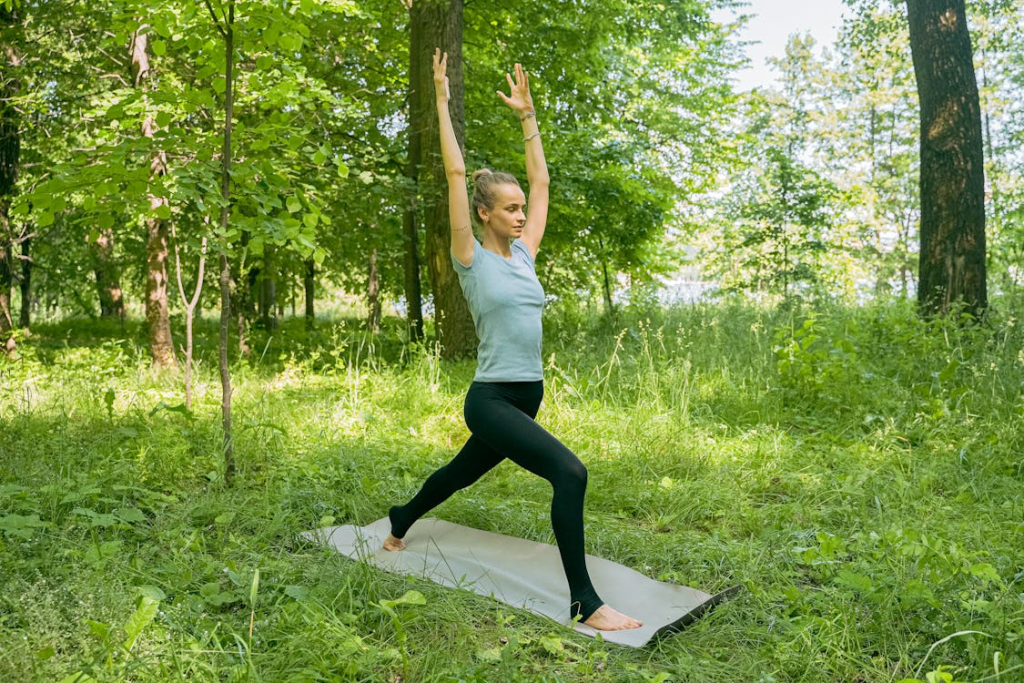
Studies demonstrate reduced anxiety and depression symptoms in people who practice regular grounding. The electrical connection with Earth appears to stabilize mood and emotional regulation. These mental health benefits complement the physical improvements from grounding.
The stress-reducing effects occur partly through cortisol regulation and improved sleep quality. Better sleep naturally enhances emotional resilience and stress management. Grounding creates a positive cycle of improved sleep leading to better stress handling.
Research suggests grounding may benefit people with post-traumatic stress disorder and trauma-related conditions. The calming effects help regulate the nervous system’s response to stress triggers. However, these studies are preliminary and grounding should and most supplement, not replace, professional mental health treatment.
Read More: 10 Simple Habits That Can Prolong Your Life
Barefoot Walking and Standing

Walking barefoot represents the most natural and accessible form of grounding. Grass, soil, sand, and concrete all provide excellent conductive surfaces for electron transfer. Start with 15-30 minutes daily to experience initial benefits.
Choose safe locations for barefoot walking, avoiding areas with sharp objects or potential hazards. Parks, beaches, and your own backyard offer ideal environments for grounding practice. Pay attention to surface temperature and weather conditions for comfort.
Morning grounding sessions can energize your day while evening sessions promote relaxation and better sleep. Experiment with timing to find what works best for your schedule and goals. Consistency matters more than perfect timing for achieving benefits.
Swimming and Water-Based Grounding

Natural bodies of water provide excellent grounding opportunities through their mineral content and conductivity. Swimming in oceans, lakes, or rivers creates full-body contact with Earth’s electrical field. The salt content in seawater enhances conductivity significantly.
Hot springs and mineral baths combine grounding benefits with therapeutic heat and minerals. These environments offer unique healing opportunities through multiple therapeutic modalities. Many people report enhanced relaxation and pain relief from mineral water grounding.
Swimming pools with concrete bottoms may provide some grounding benefits, though less than natural water sources. Chlorinated water and synthetic pool materials can interfere with electron transfer. Natural water sources remain the preferred option for water-based grounding.
Gardening and Earth Contact Activities

Gardening provides extended grounding contact while engaging in productive, meaningful activity. Digging, planting, and weeding create direct skin contact with soil. This combination of grounding and purposeful work enhances both physical and mental benefits.
Working with soil exposes you to beneficial microorganisms that support immune system function. This additional benefit complements the electrical effects of grounding. Many gardeners report improved mood and energy levels from regular soil contact.
Grounding Mats and Their Applications

Grounding mats replicate outdoor earthing experiences through conductive materials connected to electrical ground systems. These flat devices contain carbon or silver fibers that conduct electrons from Earth through your home’s grounding system. Most mats plug into standard electrical outlets using the ground port.
Desktop grounding mats allow earthing while working at computers or desks. Place your hands, arms, or feet on the mat during work sessions. This setup helps counteract electromagnetic field exposure from electronic devices while providing grounding benefits.
Floor mats accommodate standing or sitting positions for meditation, yoga, or relaxation. Many users place these mats in living rooms or bedrooms for convenient daily use. The larger surface area provides more contact points for enhanced grounding effects.
Yoga mats with integrated grounding technology combine exercise benefits with earthing effects. These specialized mats connect to grounding systems while supporting yoga or stretching routines. The combination enhances both physical fitness and grounding benefits simultaneously.
Read More: Exposure to ‘Blue Spaces’ Has Life-Long Benefits for Children
Grounding Sheets and Sleep Systems

Grounding sheets incorporate conductive materials like silver or carbon fibers woven into fabric. These sheets connect to grounding systems through cords plugged into electrical outlets or attached to grounding rods. Sleep directly on the sheets or place them under regular bedding.
Silver-threaded sheets provide excellent conductivity but may oxidize over time with washing and use. This oxidation can reduce effectiveness, requiring eventual replacement. Follow manufacturer care instructions to maximize sheet lifespan and maintain conductivity.
Grounding mattress pads offer removable options that slide on and off beds easily. These pads work under sheets or allow direct skin contact for maximum conductivity. Some manufacturers recommend only one layer between your body and the grounding surface.
Sleep systems should maintain continuous skin contact throughout the night for the best benefits. Wear minimal clothing or ensure exposed skin touches the grounding surface. Many users report improved sleep quality within the first week of using grounding sleep systems.
Specialized Grounding Accessories
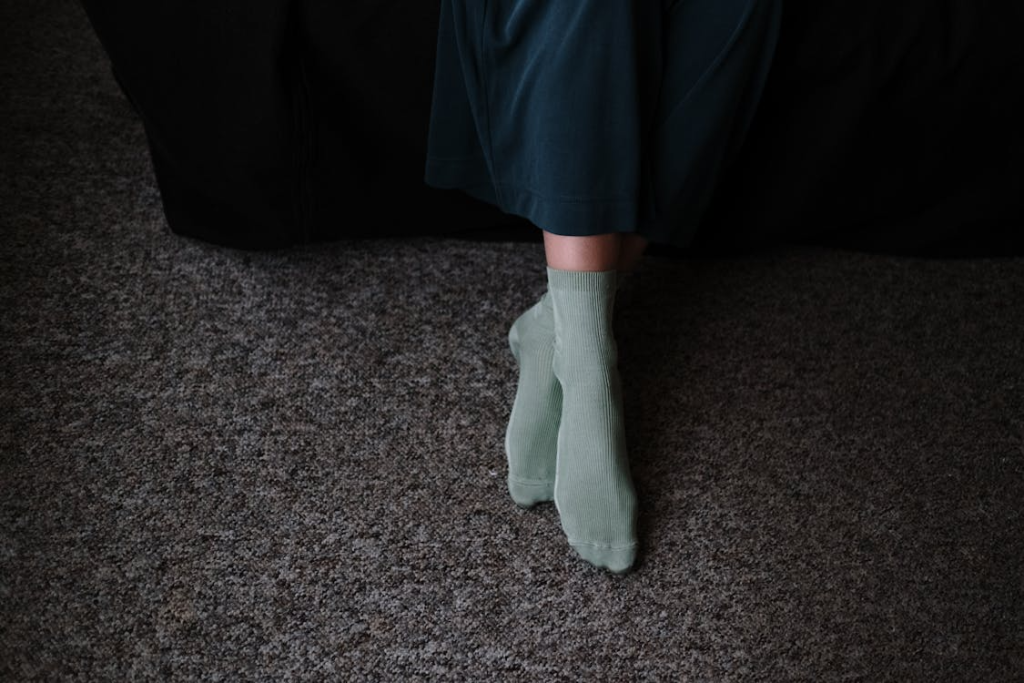
Grounding socks contain conductive materials that allow electron transfer through foot contact. Plug-in versions connect to electrical outlets, while outdoor versions use natural electron-attracting materials. These socks enable grounding while wearing shoes or in situations requiring foot protection.
Grounding patches attach directly to the skin and connect to grounding systems through snap-on cords. These adhesive patches target specific body areas for localized grounding effects. Patches work well for people with limited mobility or for targeting specific pain locations.
Grounding shoes feature conductive plugs in the sole near the ball of the foot. These specialized shoes allow grounding while walking on various surfaces. The conductive elements create pathways for electron transfer through the shoe structure.
Grounding rods provide direct earth connection when electrical outlets aren’t available or preferred. Push these metal rods into moist soil and connect grounding devices through attached cords. This method offers the most direct earth connection for indoor grounding systems.
Electrical Safety and Outlet Testing
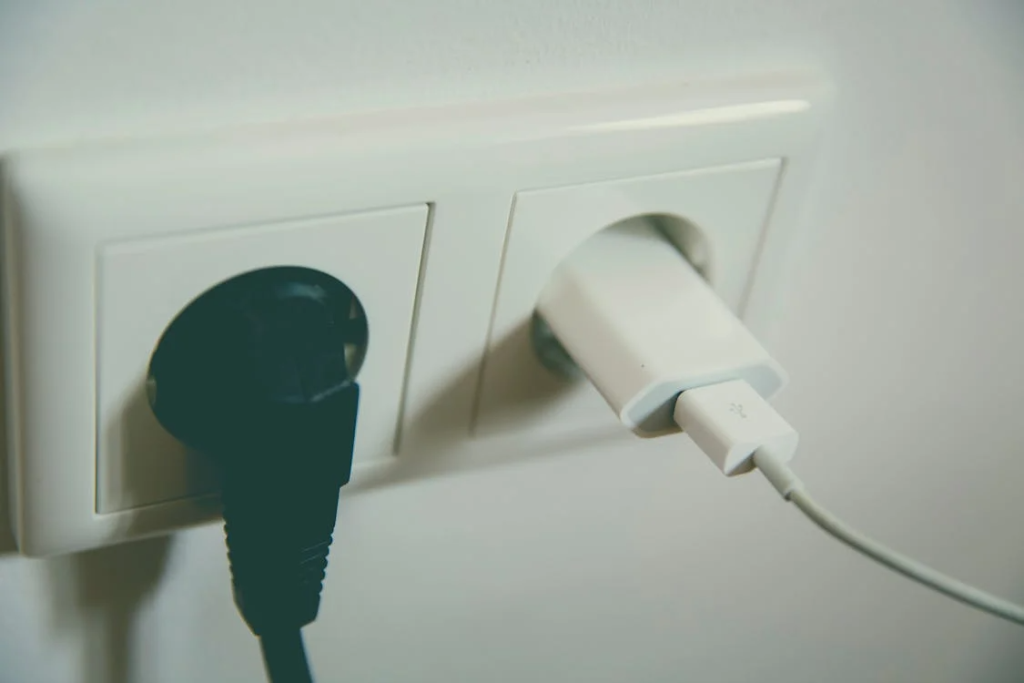
Verify your electrical outlets are properly grounded before using plug-in grounding devices. Use an outlet tester to check ground connection and electrical safety. Many grounding product manufacturers include these testers with their devices.
Properly grounded outlets contain three-prong holes with functioning ground connections. The ground port connects to your home’s grounding system, which extends to the earth’s ground. Faulty wiring can create electrical hazards and can result in serious injury or even death, making testing essential for safety.
Best Placement and Usage Strategies

Position grounding mats in areas where you spend significant time for maximum benefit exposure. Bedrooms, offices, and living rooms offer ideal locations for consistent grounding contact. Consider your daily routines when selecting placement locations.
Maintain direct skin contact with grounding surfaces for optimal electron transfer. Remove shoes, socks, and minimize clothing barriers when using grounding devices. Synthetic fabrics can interfere with conductivity more than natural materials.
Start with shorter grounding sessions and gradually increase duration as your body adapts. Begin with 30-minute sessions and extend to several hours as comfortable. Some people use grounding devices throughout sleep for maximum exposure.
Creating Dedicated Grounding Spaces

Designate specific areas in your home for focused grounding practice. These spaces should be comfortable, quiet, and conducive to relaxation. Include grounding mats, comfortable seating, and calming elements like plants or soft lighting.
Combine grounding with other wellness practices like meditation, reading, or gentle stretching. This integration maximizes your time investment while enhancing multiple aspects of health. Many people find grounding enhances their meditation or relaxation practices.
Consider portable grounding options for travel or multiple-location use. Smaller mats and patches allow grounding practice away from home. Maintaining consistency during travel supports continued benefits from your grounding routine.
Read More: Study Shows Women Who Are Surrounded By Plants Are Happier And Live Longer
Timing and Duration Recommendations
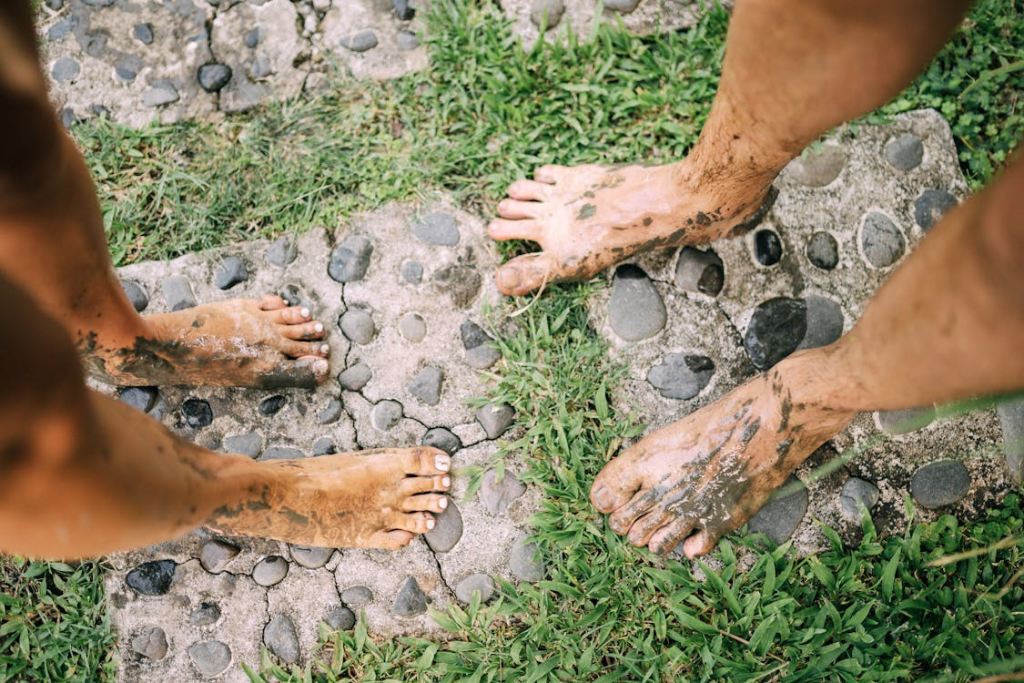
Research suggests 30-60 minutes daily provides measurable grounding benefits for most people. Some studies show positive effects beginning within 30 minutes of contact. Longer sessions may enhance benefits, but consistency matters more than duration.
Morning grounding sessions can energize your day and establish positive circadian rhythm patterns. Evening sessions promote relaxation and prepare your body for restorative sleep. Experiment with different timing to find your optimal schedule.
Listen to your body’s responses and adjust timing accordingly. Some people feel energized by grounding while others experience relaxation. Use these natural responses to guide when you practice grounding for specific goals.
Combining Grounding with Other Wellness Practices

Integrate grounding into existing exercise routines by using grounding mats during yoga or stretching. This combination enhances both physical fitness and grounding benefits simultaneously. Many practitioners report enhanced flexibility and reduced muscle tension.
Meditation and mindfulness practices complement grounding by increasing awareness of bodily sensations and changes. Focus on the physical sensations of earth connection during grounding sessions. This mindful approach may enhance the overall benefits.
Breathing exercises during grounding sessions can amplify relaxation and stress-reduction effects. Deep, slow breathing activates the parasympathetic nervous system, while grounding provides electrical balance. The combination creates powerful stress-relief synergy.
Tracking Progress and Adjusting Your Approach

Monitor sleep quality, energy levels, and pain symptoms to assess grounding effectiveness. Keep a simple journal noting these factors before and after starting grounding practice. Look for patterns and improvements over several weeks.
Pay attention to subtle changes like mood improvements, stress resilience, or faster healing from minor injuries. These benefits may be gradual and easy to miss without conscious observation. Small improvements often indicate larger positive changes developing.
Adjust grounding methods, timing, or duration based on your observed responses. Some people respond better to longer sessions, while others benefit from frequent brief contacts. Personalize your approach based on your unique responses.
Consider consulting healthcare providers about incorporating grounding into treatment plans for chronic conditions. Share your grounding experiences and any improvements with medical professionals. This communication ensures grounding complements rather than conflicts with medical treatments.
Outdoor Grounding Safety Measures

Inspect grounding areas for hazards like sharp objects, broken glass, or toxic plants before barefoot contact. Choose well-maintained areas like parks or beaches for safer grounding experiences. Carry a first aid kit when grounding in unfamiliar locations.
Be aware of weather conditions that might make outdoor grounding dangerous or uncomfortable. Extreme temperatures, storms, or icy conditions require postponing outdoor grounding sessions. Safety always takes priority over grounding practice.
Stay hydrated during outdoor grounding sessions, especially in warm weather. Prolonged sun exposure combined with grounding can increase dehydration risk. Bring water and seek shade when necessary during longer sessions.
Read More: Forest Bathing: A Retreat to Nature Can Boost Immunity and Mood
Indoor Grounding Equipment Safety

Never use electrical grounding devices during thunderstorms due to lightning strike risks. Unplug all grounding equipment when storms approach your area. Resume use only after storms have completely passed.
Inspect grounding device cords and connections regularly for wear, damage, or fraying. Damaged electrical components can create shock hazards or fire risks. Replace damaged equipment immediately and avoid using questionable devices.
Ensure proper electrical installation and grounding in your home before using plug-in grounding devices. Faulty home wiring can make grounding devices dangerous rather than beneficial. Professional electrical inspection provides peace of mind.
Medical Considerations and Contraindications

Consult healthcare providers before starting grounding if you have serious medical conditions or take medications. Some conditions or treatments might interact with grounding effects. Professional guidance ensures safe integration with existing treatments.
People with pacemakers or other electrical medical devices should discuss grounding safety with their doctors. While grounding uses natural electrical currents, medical device interactions require professional evaluation. Safety considerations vary by device type and individual circumstances.
Pregnant women should consult obstetricians before beginning grounding practices. While grounding appears generally safe, pregnancy involves unique physiological considerations. Professional guidance ensures both maternal and fetal safety.
Monitor for any unusual symptoms or reactions when starting grounding practice. Some people experience temporary adjustment symptoms like tingling or mild fatigue. Discontinue grounding and consult healthcare providers if any concerning symptoms develop.
Current Research Findings

Published studies demonstrate measurable physiological changes during grounding sessions. Research shows improvements in inflammation markers, cortisol levels, and heart rate variability. These objective measurements support subjective reports of improved wellbeing.
A 2015 review published in the Journal of Environmental and Public Health summarized grounding research findings. The review highlighted improvements in sleep, pain reduction, and stress management. However, researchers noted the need for larger, more comprehensive studies.
Studies on grounding typically involve small sample sizes, limiting the generalizability of results. Most research includes 50 or fewer participants, making definitive conclusions difficult. Larger studies would strengthen the evidence base for grounding benefits.
Research methodology varies significantly between grounding studies, making comparison challenging. Some studies use subjective self-reports, while others measure objective biomarkers. Standardized research protocols would improve the quality and consistency of grounding research.
Beginner-Friendly Approaches

Start your grounding practice with simple outdoor activities like walking barefoot in your yard or a local park. Begin with 15-30 minute sessions to allow your body to adjust gradually. Pay attention to how you feel during and after these initial sessions.
Choose comfortable, safe locations for your first grounding experiences to build confidence and positive associations. Familiar environments reduce anxiety and allow focus on the grounding sensations.
Keep initial expectations realistic and focus on the process rather than immediate dramatic results. Some people notice changes quickly, while others require weeks of consistent practice. Patience and persistence lead to the best long-term outcomes.
Document your early grounding experiences in a journal to track subtle changes and improvements. Note sleep quality, energy levels, mood, and any physical sensations. This record helps identify patterns and motivates continued practice.
Building Consistency and Habit Formation

Integrate grounding into existing daily routines to increase consistency and reduce barriers to practice. Morning coffee outdoors or evening relaxation sessions create natural grounding opportunities. Linking grounding to established habits improves adherence.
Set realistic goals for frequency and duration that fit your lifestyle and schedule. Daily practice provides optimal benefits, but even several sessions per week offer advantages. Consistency matters more than perfection in establishing beneficial grounding habits.
Find grounding methods you genuinely enjoy to increase motivation for continued practice. Some people prefer active outdoor grounding while others enjoy passive indoor sessions. Enjoyable practices become sustainable long-term habits more easily.
Conclusion

Grounding offers a simple, natural approach to supporting your health and wellbeing through connection with Earth’s electrical energy. While research continues to explore its mechanisms and benefits, many people report significant improvements in sleep, pain, stress, and overall vitality. Whether through outdoor barefoot contact or indoor grounding devices, this ancient practice provides modern solutions for contemporary health challenges. Start slowly, stay consistent, and pay attention to your body’s responses as you explore the potential benefits of grounding for your unique situation.
However, it’s important to remember that the scientific evidence for grounding is still preliminary, with many claims based on small or non-blinded studies. Grounding should not be used as a replacement for prescribed medical treatments or professional healthcare advice. Always consult with a qualified healthcare provider before making changes to your health regimen.
Disclaimer: This information is not intended to be a substitute for professional medical advice, diagnosis or treatment and is for information only. Always seek the advice of your physician or another qualified health provider with any questions about your medical condition and/or current medication. Do not disregard professional medical advice or delay seeking advice or treatment because of something you have read here.
Read More: 9 Essential Oils to Help You Get Some Rest
